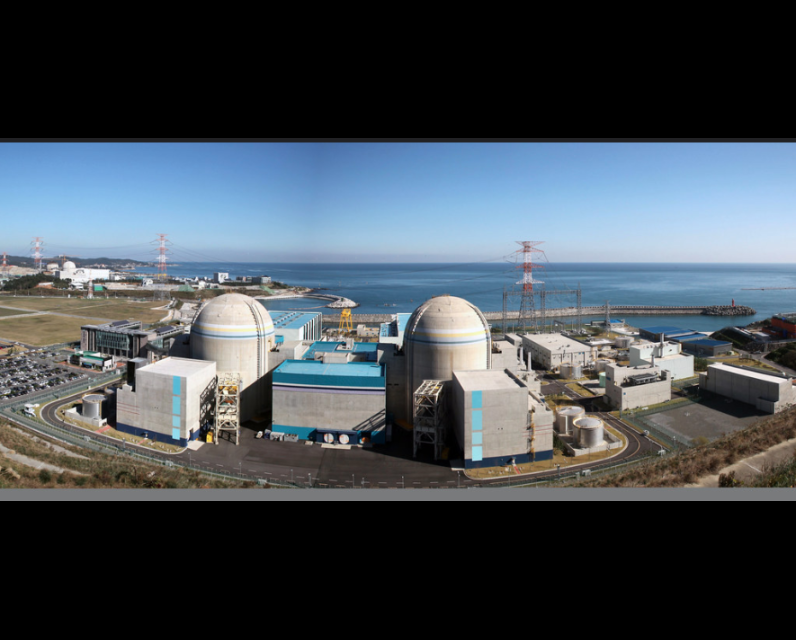Unpublished Opinions
Pat has been volunteering with the Greens since he was able to vote. Starting as a canvasser and road-sign installer, he worked his way into positions including volunteer coordinator, campaign manager and chief financial officer. When he was 21 years old, Pat represented the Greens as the candidate in Ottawa-West Nepean for the 2018 provincial election, after which he earned his diploma in Horticultural Industries at Algonquin College.
Pat is now preparing to complete his final semester at the University of Ottawa studying Environmental Economics and Public Policy. During his studies, he completed research with the Vanier Community Association to help develop an Intergovernmental Homelessness Strategy Analysis, presented a paper on the prospect of a provincial public school garden network, and delivered a mock memorandum to cabinet on how the government can fund music therapy as a supplement to addictions and mental health treatments.
Pat also has extensive experience working in customer service, having worked 6 years at McDonald’s, and the last 3 years at Gabriel Pizza.
Canada's Bum-steer Nuclear Nirvana

Hold up. Has Canada decided that Nuclear energy is our salvation? Let’s take a deeper look at the Provincial Governments’ declaration of a pro-nuclear agenda.
The Provincial Governments’ declaration of a pro-nuclear agenda is designed to – generate heat for oilsands production, generate steam production for industrial processes, power generation for remote communities and mines (assuming indigenous communities will support the idea of nuclear power), and replacing the remaining 17 coal-fired power stations across Canada.
Surfacing first in 2018, New Brunswick invested $10 million to attract Small Modular Reactor research in the province. On December 1st 2019, the governments of Saskatchewan, New Brunswick, and Ontario signed a memorandum essentially teaming themselves up with the nuclear power industry to reduce carbon emissions. This announcement came following the Federal Governments decree that modular reactors are the future of energy in Canada. Capital ‘C’ conservative political organizations are typically cut from the same ideological cloth, so the implications of increased nuclear infrastructure in Canada is likely to increase tarsands outputs in Alberta – effectively negating any reduction in CO2 emissions as a result of nuclear energy. I imagine that the government of PEI was held back from joining this memorandum because of their official opposition's strong anti-nuclear sentiments.
A quick history of nuclear energy: Nuclear energy entered North America in the 1940’s as a response to Germany’s Uranverein – nuclear weapons program. The first nuclear reactor was built in Chicago in 1942 by Nobel Prize winner Enrico Fermi, and was essentially the dawn of The Manhattan Project Following the catastrophic bombings in 1945, nuclear energy wasn’t actually commercialized until the 1960s. Canada's first nuclear reactors were the ZEEP (Zero Energy Experimental Pile) reactors build on Chalk River, which were used to create plutonium for WMDs during the Cold War and conduct R&D on nuclear reactors. This R&D lead to the CANDU (Canada Deuterium Uranium) reactors in 1962, and 1968. The success of these facilities was instrumental in the establishment of commercial nuclear energy being generated in Pickering, Ontario.
What’s important to consider from this recap is the significance of the brand “CANDU”, and that these reactors were built across the world. The CANDU reactors were patented by Atomic Energy of Canada Limited (AECL), Hydro Quebec, New Brunswick Power, Candu Energy Inc., and what is now Ontario Power Generation. Candu Energy Inc is a fully-owned subsidiary of the now infamous Montreal-based engineering firm SNC-Lavalin, and was once the commercial reactor division of Atomic Energy of Canada Limited prior to the $15 million purchase. This subsidiary focuses on the design and supply of nuclear reactors, products, and services. In 2014, Candu Energy increased its sharing of human resources with SNC-Lavalin.
Following the meltdowns of Chernobyl, Three Mile Island, and Fukushima, the nuclear industry has been struggling keep its head above the water. Since the devastation in Fukushima, Japan has halted all nuclear reactors (until recently), and has made up for the lack of energy by importing fossil fuels from the Middle East; not an ideal scenario given we are in an era where we are striving to reduce our carbon emissions. Small Modular Reactors are the industry’s attempt at salvation.
The memorandum signed by this trifecta of conservative premiers and supported by the liberal government of Canada focuses specifically on the R&D of small modular reactors. ARC Canada (Advanced Reactor Concepts) is based in Saint John, New Brunswick, would take the reins on this project, aiming to use these SMR models to complement the existing infrastructure at Point Lepreau Nuclear Generating Station in N.B, and eventually at facilities across the country.
ARC Canada’s most notable co-founder is Scott L Campbell. His impressive biography lists his contributions to the energy industry in the following ways;
- Acting as a member of the secretary of energy advisory board as appointed by U.S secretary of energy Rick Perry (Perry recently resigned amid Ukraine controversy)
- An open denier of anthropogenic climate change
- Served as coordinator of U.S-Japan Nuclear Energy Cooperation
- Served as director of the Office of Policy, Planning and Analysis at the Department of Energy under President Ronald Regan
- Served on the National Petroleum Council under President Bush 41
- Served as an executive of an energy company in Texas
Campbell also lists ‘trade secrets’ in his 'industry knowledge' section on Linked-in.
After viewing his only published work on the internet, Campbell describes nature as a ‘resort of jack rabbits and badgers’ that gets in the way of the development of ‘pleasant residential environments and commercial areas’. Sounds like something right out of the film The Great Outdoors. Are you starting to smell the sulphur yet?
Nuclear energy produces about 10% of the world’s energy from 450 reactors. Consider France, a country where their electricity is 71% generated by nuclear power, and they still consume more fossil fuels than most of their neighboring countries who use less nuclear power. China produces more energy from wind turbines thar nuclear reactors. A feat that may have been achievable in Ontario, had the Ontario Government decided not spend $231 million to demolish ready-to-use wind turbines. $231 million could have helped install one hundred twenty-seven 7.5kW solar systems.
Individuals who argue the statistic that Canada emits only 2% of global carbon dioxide emissions are looking at the wrong statistic. Canada, despite only emitting 2% of global CO2 emissions, actually ranks 3rd in emissions per capita. So as a Canadian, you are the 3rd worst global emitter of CO2. Something [not] to be proud about, eh? Considering the population density of Canada, we may as well be lumped in with America’s emissions. The following chart depicts the top emitting countries per capita, their total emissions, landmass, population, and total percentage of power coming from nuclear reactors. Statistics were pulled from Wikipedia and various sources.
|
Country |
Approximate Population |
Approximate Landmass |
CO2 emissions per capita (metric tonnes per person) |
Total CO2 emissions (metric mega tonnes per year) |
% energy nuclear power |
|
US |
327 Million |
9.8 million km2 |
16.5 |
9056.8 |
19.3 |
|
Australia |
24 million |
7.6 million km2 |
15.4 |
4833.1 |
0 |
|
Canada |
37 million |
9.9 million km2 |
15.1 |
540.8 |
14.9 |
|
Netherlands |
17 million |
41.5 thousand km2 |
9.9 |
174.7 |
3 |
|
Japan |
127 million |
378 thousand km2 |
9.5 |
1320.7 |
6.2 before Fukushima |
|
Germany |
83 million |
357 thousand km2 |
8.9 |
796.5 |
11.7 (phased out by 2022) |
|
China |
1.3 billion |
9.5 million km2 |
7.5 |
10877.2 |
4.2 |
|
France |
70 million |
643 thousand km2 |
4.6 |
338.1 |
71.7 |
|
Brazil |
209 million |
8.5 million km2 |
2.6 |
492.7 |
2.7 |
|
India |
1.3 billion |
3.2 million km2 |
1.7 |
2452.7 |
3.1 |
According to the reports from the IPCC, in order to limit the impacts of a climate catastrophe, human GHG emissions should be capped at about 1,100 pounds per person, per year. It takes about the same amount of emissions to produce 2 tonnes of concrete. Modern reactors take at least 67 tonnes of concrete; which is equivalent to about 73,700 pounds (33.4 metric tons) of GHG emissions just for part of the construction alone. That 73,700 estimate does not include the emissions from extraction, refining, and transportation of uranium, nor any of the other materials required to build the reactor. This also does not include the implications surrounding radioactive waste.
The nuclear energy industry does not care about climate change. Nucleocrats are using the climate crisis to attract investment because of its ‘zero emissions’ source of energy. In reality, the nuclear industry is one of the worst industries for the natural world, because of the astounding financial and material costs associated with building nuclear reactors, the management of radioactive waste, and the costs of decommissioning a nuclear reactor.
It will cost an estimated $352 million USD to construct a 10MW small modular reactor before any costs/savings specific to the modular design. An additional $7 million USD is the estimated cost to generate a uranium core. The Gentilly-2 nuclear reactor will be decomissioned over 50 years with an estimated cost of about $1.8 billion ($36 million a year). Radioactive waste is a small portion of the total industrial hazardous waste emitted into the environment, and is not limited to nuclear energy. According to GE Hitachi, Canada and the USA spent an estimated $46.5 billion dollars for managing and disposing radioactive waste from the nuclear industry (Canada only spent $6.5 billion). GE Hitachi argues that the new ARC reactors produce less waste because they harness more of the energy in uranium.
My belief is that the federal and provincial governments are being misadvised that a nuclear future is the saving grace for civilization in this era of climate awareness. Canada’s governments need to focus their attention on truly renewable sources of energy if they intend to face the climate crisis head-on, and modern civilization must discuss the reality of incorporating socialist policies to lead us into a sustainable future by abolishing environmentally damaging processes associated with a GDP-focused economy. Ultimately, a shift toward energy conservation, rather than increasing energy production, must be the direction governments and society need to take.



Comments
Be the first to comment